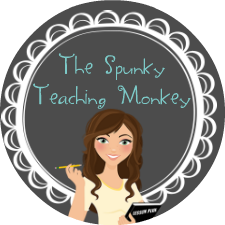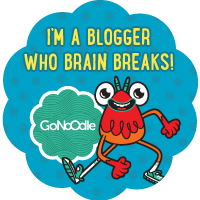1. Class-Yes!
Class-Yes is a way to get students' full attention back on you. I plan to use this as well as the Kagan strategy "Signal Please!" with the hand up.
2. Mirror Words
Mirror words is when the students repeat the words and gestures the teacher says and does.
3. Help
Students say "Help" when they need help completing a sentence or thought orally. The rest of the students quietly give them help. You can see this in the first video on number 6.
4. "You're still cool!"
When a student or teacher makes a mistake everyone else says, "You're still cool!" You can see this in the first video on number 6.
5. Classroom Rules and how to implement the 5 rules
There are 5 rules in WBT. You can see the students in the video below practicing each rule. (It is at the beginning of the video).
I plan to use these 5 rules, but I have altered them to match my rules.
My rules include:
1) Follow directions Quickly
2) Raise a One to speak
3) Raise a Two to leave your seat
4) Raise a Three for an emergency
5) Make smart choices!
6) Make your dear teacher happy
In order to continue to practice the classroom rules here are 3 strategies to implement:
1) 3 Repeat
Example: Teacher says, "Pencils." Student says, "Pencils, Pencils, Pencils" as they take out their pencils.
Example: Teacher says, "Pencils." Student says, "Pencils, Pencils, Pencils" as they take out their pencils.
2) Rule 2 Cue
Example: Teacher says, "Rule 2." Students say, "Raise a one to speak!" <- this can be used when a student forgets the rule.
Example: Teacher says, "Rule 2." Students say, "Raise a one to speak!" <- this can be used when a student forgets the rule.
3) Rule 3 Cue
Example: Teacher says, "Rule 3." Students say, "Raise a two to leave your seat!"
4) Smart/Foolish Discussion
Example: When students do something like make fun of someone, hit someone, etc. This is a good time to stop the lesson and discuss what a smart and foolish choice is and what that student could have done better.
Example: When students do something like make fun of someone, hit someone, etc. This is a good time to stop the lesson and discuss what a smart and foolish choice is and what that student could have done better.
6. WBT Oral Writing
I really like the oral writing in order to scaffold students from a sentence to an essay. WBT writing also connects to the CCSS standard of supporting writing with evidence. Although I believe it is important to orally practice one's writing, I think that it is just as important to practice brainstorming and writing on paper. I would not use the oral writing in every writing lesson.
Jasselle Cruz was one of my break-out session presenters. In this video, you see her 5th graders attempt to spontaneously create an oral essay on a topic they have never seen. Each student rapidly tosses in a sentence. The students also create imaginary research to support each of their main points. The imaginary research will help students know how to include a "deep citation" using real research in their actual writing.
In this video you will also see students using the "help" gesture, Jasselle's alternative to "Class-Yes!" ("Class started from the bottom now we're here"), students using the "You're still cool" phrase, and students using the grammar "brainies".
This is a sixth-grade science lesson using the five step plan for writing sentences. The sentences include strong evidence and are supported with examples and details.
7. Hands and Eyes
Hands and eyes is used to direct the students attention back on you. It is an alternative to the usual "class-yes" technique. This strategy is used when you have something VERY important to say. Students should fold their hands and look at the teacher.
I hope you enjoyed the videos! You can find more videos here! You can also check out the WBT website.





















